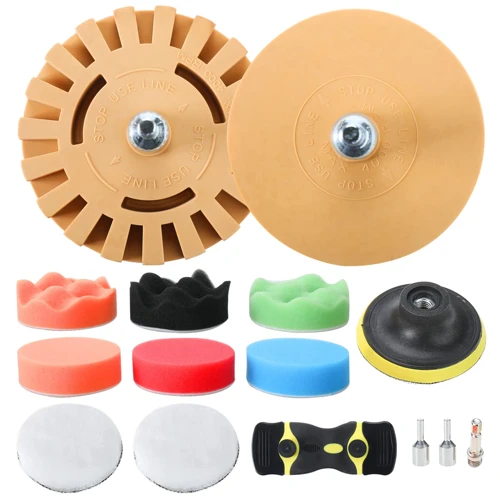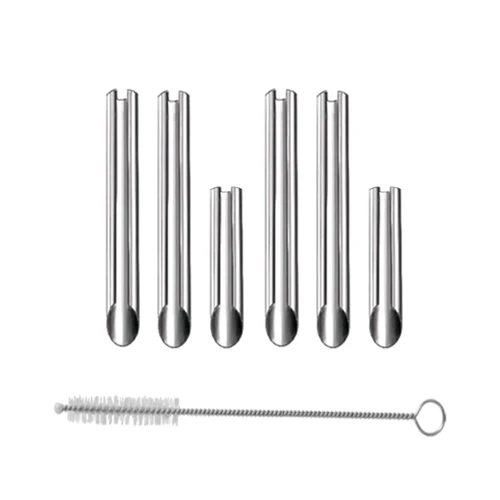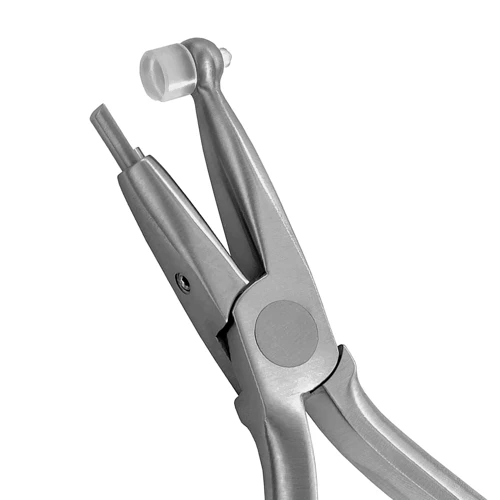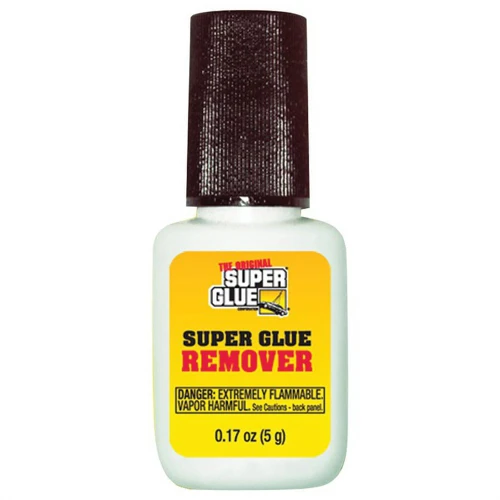Have you ever found yourself in the frustrating situation of a broken headphone jack stuck in your device, with no idea how to remove it without causing further damage? This is a common problem, and many people resort to using glue to fix it, which can lead to more problems down the line. Fortunately, there are several simple and effective methods to remove a broken headphone jack without glue. In this article, we will explore step-by-step techniques for safely and successfully removing a broken headphone jack, so you can get back to enjoying your music or videos without any interruptions. Let’s dive in and see how you can fix this problem!
Gather Necessary Supplies
Before attempting to remove a broken headphone jack without glue, you must first gather the necessary supplies. Fortunately, you don’t need many items to get started, and most of them can be found around your house. The tools you will need include tweezers, needle-nose pliers, and a safety pin. You may want to have some super glue remover on hand in case you accidentally get glue on the surrounding area. If you need additional help removing glue from a specific material, check out our article on how to get glue off the floor or browse our other related resources for more information.
Tweezers
To remove a broken headphone jack without glue, tweezers can be a useful tool to have on hand. They come in different shapes and sizes, so choose one that works best for the situation. Pointed tweezers can be helpful for removing small pieces of debris, while flat edge tweezers can be used to grip onto the broken piece. It’s important to use tweezers with a good grip to ensure a strong hold on the broken piece and prevent it from slipping.
Below is a table of different types of tweezers and their descriptions:
| Type of Tweezers | Description |
|---|---|
| Pointed Tweezers | Sharp, pointed tips; helpful for removing small debris |
| Flat Edge Tweezers | Flat tips with a strong grip; useful for grabbing onto broken pieces |
| Serrated Edge Tweezers | Tips with a serrated edge for extra grip; helpful for removing tougher debris |
| Bent Tweezers | Tips are bent at an angle; useful for reaching awkward angles and tight spaces |
Having a variety of tweezers on hand can make the task of removing a broken headphone jack easier and more efficient. If the broken piece is too small to grip with tweezers alone, refer to the previous section on using a safety pin to remove any debris that may be obstructing the view. Once all debris has been removed, move on to attempting to remove the broken piece with tweezers.
If using tweezers proves to be unsuccessful, try using needle-nose pliers which will be discussed in the next section. If the broken piece is stuck and cannot be easily removed, check out our article on how to get super glue off ceramic for tips on removing tough adhesives.
Needle-nose pliers
One of the tools that you can use to remove a broken headphone jack without glue is needle-nose pliers. These pliers are long and skinny, making them perfect for reaching into small spaces like the headphone jack. They also have a pointed end that you can use to grip onto the end of the jack.
Using Needle-nose Pliers to Remove a Broken Headphone Jack:
| Step 1: | Insert the tip of the needle-nose pliers into the headphone jack and try to grab onto the broken end. |
| Step 2: | Gently wiggle the pliers back and forth to loosen the broken piece of the headphone jack. Be careful not to apply too much pressure or you might damage the wiring inside the jack. |
| Step 3: | Once you have a good grip on the broken end of the jack, gently pull it out of the headphone port. Be sure to pull straight out to avoid bending the jack or damaging the internal wiring. |
Keep in mind that needle-nose pliers can be a bit tricky to use if you’re not familiar with them. If you’re having trouble getting a good grip on the broken headphone jack, you might want to try a different method like using tweezers or a safety pin.
If you accidentally get super glue on your needle-nose pliers while attempting to remove a broken headphone jack, you can use a super glue remover liquid to get it off. You can learn more about how to use super glue remover in our article on how to remove crazy glue from stainless steel.
Safety pin
Safety pin is a sharp and pointed instrument commonly found in most households. This tool comes in handy when you need to remove debris from the headphone jack. Before using a safety pin, make sure that it is clean. You can sterilize the safety pin by dipping it in rubbing alcohol or boiling water. Follow these steps using a safety pin to remove the broken piece from the headphone jack:
- Step 1: Push the safety pin into the headphone jack gently. Stick the safety pin as deep as you can and pull the safety pin out slowly. Repeat this process until you remove all the debris from the jack.
- Step 2: Take a flashlight and shine it on the jack to make it easier for you to see inside.
- Step 3: Avoid using too much force on the safety pin, as it might cause damage to the inside of the headphone jack.
If you find glue residue around the headphone jack, you can check out our article on how to get paper glue off of plastic or how to remove leather glue to learn how to get rid of it.
Super glue remover
Super glue remover is a useful product that can help you remove any excess glue that may be left behind after removing a broken headphone jack. It can also help dissolve any super glue that may be stuck in the headphone port.
There are many different types and brands of super glue removers available in the market, so it’s important to choose the right one for your specific needs. Some of the best super glue removers include acetone, rubbing alcohol, and vinegar. Acetone is a very effective super glue remover but should be used with caution, as it can dissolve some plastics and damage the surface of many materials.
Another good option is rubbing alcohol. It is a mild solvent that can dissolve super glue without damaging the surface of most materials. Simply apply a small amount of the rubbing alcohol to a clean cloth and rub it onto the affected area until the glue dissolves. Vinegar is also an effective option for removing super glue. It works by breaking down the chemical bonds in the glue, making it easy to remove.
Whatever type of super glue remover you choose, it’s important to follow the instructions carefully and to use the product in a well-ventilated area. Always wear gloves and goggles to protect your skin and eyes. In some cases, you may need to use a combination of different super glue removers to achieve the best results.
If you’re interested in learning more about how to remove other types of glue, be sure to check out our articles on how to get hot glue off glass, how to get wood glue off walls, how to open tacky glue, how to get nail glue off laptop, and how to remove epoxy glue from concrete.
Remove the Debris with a Safety Pin
When you break your headphone jack, one of the first things you need to do is to remove any debris left inside. Using a safety pin can be an effective way to remove the debris. First, straighten the safety pin and ensure that it has a pointed end. Then, insert the pointed end of the safety pin into the jack socket and carefully maneuver it around until any debris stuck inside comes loose. Be careful not to damage the inner components of the jack socket while using the safety pin.
It is important to note that using a safety pin can be tricky and requires patience. The debris may be stuck deep inside the jack socket, so it may take some time to remove it completely. However, using a safety pin is a simple and effective way to remove the debris without the need for any special tools or equipment.
Once you’ve removed any debris, try using your headphones again to see if the problem has been resolved. If the issue persists, move on to the next step of the process.
Grab onto the Broken End with Tweezers
Now that you have removed any debris from the broken headphone jack, it’s time to grab onto the broken end with tweezers. This step can be a bit tricky, as the broken end is often lodged deep inside the port. However, with the right tools and technique, you can successfully extract the broken end and get back to enjoying your music or podcasts. Let’s dive into the different types of tweezers you can use and how to effectively use them.
Using Pointed Tweezers
When using pointed tweezers to remove a broken headphone jack, it’s important to be cautious and precise. Follow these steps to ensure success:
- First, assess the situation and determine the angle at which the jack broke.
- Next, take the pointed tweezers and carefully insert them into the broken headphone jack opening.
- Use the tweezers to gently grip the remaining portion of the jack. Be sure to only grab onto the exposed portion of the jack, as gripping any deeper could cause further damage to the device.
- With a firm grip on the jack, gently wiggle it back and forth while pulling it out. It may take a bit of patience and finesse, but the jack should eventually come loose.
- Once you’ve successfully removed the broken jack, inspect the device for any remaining debris that may have fallen in during the removal process.
- If any debris is present, use a safety pin or needle-nose pliers to carefully extract it. Be sure not to push any debris further into the device, as this can cause major issues.
- Once the device is free of debris, check to ensure everything is in working order before using it again.
By following these steps and utilizing pointed tweezers, you can safely remove a broken headphone jack without causing any further damage to your device.
Using Flat Edge Tweezers
When removing a broken headphone jack, it’s important to have the right tools at your disposal. One such tool that can be helpful is flat edge tweezers. Here’s how to use them effectively:
Step 1: Start by trying to gently grasp the end of the broken headphone jack with the tweezers. Be careful not to apply too much pressure, as this could cause the jack to break off even further.
Step 2: If the tweezers are not able to grip the jack securely, take care to maneuver the tweezers until they can get a good grip.
Step 3: Once you have a good grip on the jack, try to slowly and carefully pull it out. Be sure not to twist or turn the tweezers as this can cause the jack to break even further.
Step 4: If the jack still won’t budge, try wiggling it back and forth gently with the tweezers to loosen it from its position.
It’s important to note that using flat edge tweezers may not work in all cases, as the design of the headphone jack and the damage to it may require a different approach. However, it’s certainly a method worth considering and can be highly effective when used correctly. If all else fails, trying different tools and techniques until you can safely remove the broken jack is recommended.
Removing with Needle-nose Pliers
If you weren’t able to remove the broken headphone jack using tweezers or a safety pin, you can try using needle-nose pliers. Unlike the other tools, needle-nose pliers have a wider grip and can provide a stronger hold on the broken headphone jack.
Step 1: Carefully insert the pliers into the headphone jack. Be sure to grip the edge of the broken piece firmly.
Step 2: Gently pull the broken piece out of the jack. Be careful not to twist or force it out, as this can cause further damage to your device.
Step 3: If the broken piece is still lodged in the jack, try gently wiggling and tugging on it with the pliers. This can sometimes help loosen it and make it easier to remove.
Step 4: Once you have successfully removed the broken headphone jack, inspect the jack for any damage that may have occurred due to the removal process.
It is important to note that needle-nose pliers should only be used as a last resort, as they have the potential to cause damage or leave scratches on your device. It is recommended to use this method only if you have experience with using pliers or if you are confident in your ability to remove the broken headphone jack without causing any additional damage.
Use Super Glue Remover Liquid
If all other methods fail to remove the broken headphone jack, there is one last resort that you can try – Super Glue Remover Liquid. This liquid is specifically designed to dissolve super glue, and it can also work on other adhesives as well. However, it is important to use it carefully, as it can damage the surrounding areas of your phone or device if it is not used properly.
Step 1: Prepare the Area
Before applying the Super Glue Remover Liquid, you need to make sure that the surrounding area is protected. Use masking tape or any other protective material to cover the surrounding areas of the broken headphone jack to avoid any accidental damage. It is also important to ensure that the liquid does not get inside the phone as it can damage the internal components.
Step 2: Apply the Super Glue Remover Liquid
Once the surrounding area is protected, apply a small amount of Super Glue Remover Liquid onto the broken end of the headphone jack. It is important to use only a small amount of the liquid, as a large amount can damage the surrounding areas. Leave the liquid to work for 10-15 minutes.
Step 3: Remove the Broken Headphone Jack
After 10-15 minutes, use a pair of tweezers or needle-nose pliers to gently remove the broken headphone jack. If the jack does not come out easily, do not force it out. Instead, apply another small amount of the Super Glue Remover Liquid and wait for another 10-15 minutes before trying again.
Step 4: Clean the Area
Once the broken headphone jack is removed, clean the surrounding area with a cloth or cotton swab. Make sure to remove any residue of the Super Glue Remover Liquid to avoid any damage to your phone or device.
Remember, Super Glue Remover Liquid should be used as a last resort option. If none of the other methods work, then you can try this method. However, it is important to use it carefully and follow the instructions properly to avoid any damage to your device.
Preventing Headphone Jack Breakage in the Future
To avoid the inconvenience of having to remove a broken headphone jack in the future, it is essential to take specific measures that can help to prevent such occurrences. Here are some tips to take note of:
1. Be Gentle with Your Headphones: One common reason that causes headphone jacks to break is excessive force or pressure being applied while inserting or removing the headphone jack. To prevent this, be gentle when plugging in or removing your headphones. Don’t force them in or yank them out recklessly simply because you’re in a rush.
2. Store Your Headphones Properly: How you store your headphones can significantly impact their lifespan. You need to ensure that they’re stored correctly, allowing them to remain in good condition. Avoid squeezing them tightly in your pocket or tossing them carelessly into your bag. Instead, gently wrap the cords and store them in the carrying case that came with the headphones.
3. Check the Headphone Jack Regularly: Check your headphone jack periodically to ensure that it’s still firmly attached to your device. If you notice any looseness or wiggling, it’s a sign that the jack could come out or break off entirely. In such scenarios, take the device to a specialist for repair before things get worse.
4. Avoid Stressing the Connector: Be careful how you handle your device when headphones are plugged in. Don’t allow the cord to hang over the edge of a table or laptop because it can cause undue stress to the connector.
By following these effective tips, you can help to protect your headphone jack and extend its lifespan, thus reducing the risk of breaking off and having to remove a broken headphone jack without glue in the future. Remember always to handle your headphones with care to avoid any unnecessary damage.
Conclusion
In conclusion, removing a broken headphone jack without glue is not as difficult as it seems. With the right tools, such as tweezers, needle-nose pliers, a safety pin, and super glue remover, the broken end of the headphone jack can be removed with ease.
It’s important to take precautions to prevent headphone jack breakage in the future. This can be done by avoiding excessive force when inserting or removing the headphone jack, using a protective case, and avoiding bending or twisting the headphone cord.
If the broken end cannot be removed using these methods, it’s best to seek professional help from an electronics repair shop. Attempting to remove the broken end with force or improper tools can cause further damage to the device.
By following the steps outlined in this article and taking preventative measures, you can salvage your headphone jack and avoid the need for costly repairs.
Frequently Asked Questions
1. Can I use regular glue to remove a broken headphone jack?
No, regular glue will not work for removing a broken headphone jack. It can actually make the problem worse by making the debris stick to the inside of the jack.
2. What if the broken end of the headphone jack is stuck too deep inside the port?
You may need to use needle-nose pliers or a super glue remover to remove the broken end. If these methods don’t work, consider consulting a professional.
3. Is it difficult to remove a broken headphone jack?
It can be difficult, but with the right tools and a steady hand, removing a broken headphone jack without glue is manageable.
4. Can I use household tools to remove a broken headphone jack?
Yes, you can use household tools such as tweezers, needle-nose pliers, and a safety pin to remove a broken headphone jack without glue.
5. Is it possible to prevent headphone jack breakage?
Yes, you can prevent headphone jack breakage by handling your device with care, avoiding yanking or pulling the headphones out of the jack, and properly storing your headphones when not in use.
6. Can I use super glue remover on any type of headphone jack?
Super glue remover may be too harsh for some types of headphone jacks, so be sure to check the manufacturer’s recommendation before use.
7. What if I accidentally push the broken piece further into the headphone jack port?
If you accidentally push the broken piece further into the port, try using a safety pin to carefully maneuver it out. Be gentle to avoid causing additional damage.
8. Can I use my headphones while waiting to remove a broken headphone jack?
No, it’s best to avoid using your headphones until the broken jack is removed to prevent further damage or debris from getting stuck in the port.
9. What should I do if I can’t remove the broken headphone jack myself?
If you are unable to remove the broken headphone jack yourself, consider taking your device to a professional for repair.
10. How often should I check my headphone jack for damage?
It’s a good idea to check your headphone jack for damage periodically, especially if you notice any issues with sound quality or difficulty inserting the headphone plug.




